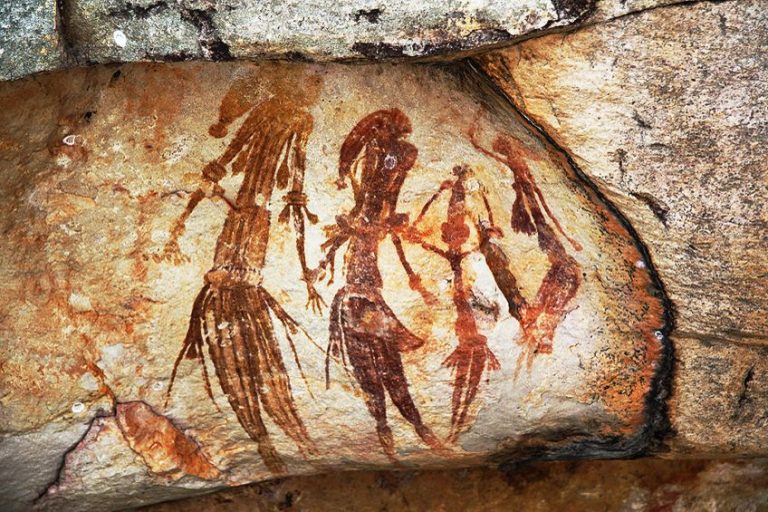What Is Contemporary Art? – The Art Styles of Today
Contemporary art refers to all forms of art produced since the 1980s and is often misunderstood for works that are solely produced in the present. The term is marked by a change in the way that artists view and approach their art-making processes, of which were vastly transformed in the late 20th century. In this article, we will be unpacking the notion of contemporary art by examining some of the common themes in contemporary art, as well as famous examples of contemporary art. Read on for more about this fascinating segment of art history and its ongoing development!
What Is Contemporary Art?
Many mistake the definition of contemporary art to encompass art that is solely produced in the present era. However, Contemporary art had its origins in the 1980s, which saw many developments in terms of how art could be produced and new mediums available to artists to explore. The definition of Contemporary art encompasses all art created since the 1980s and is generally made in response to the current context. This can include the political and cultural issues around us, as well as themes of identity, sexuality, race, gender, climate change, and technology.
Art produced since the 1980s saw many artists make art based on concepts that respond to the world’s political and cultural elements. It is also important to keep in mind that Contemporary art emerged due to the advances in technology, printing technologies, and the invention of color photography, which changed the way artists could represent and capture key events in the world.
From artists such as Andy Warhol and Takashi Murakami to Jeff Koons and Yayoi Kusama, Contemporary art can encompass a range of media and styles that address different current themes. Many emerging and established artists’ works can also be viewed at renowned Contemporary art museums and galleries around the world, including the Centre Pompidou in Paris, Tate Modern, and the annual Venice Biennale.
Contemporary art is not merely about the aesthetic pleasure of looking at an artwork but is much more focused on sharing ideas. Contemporary art is thus marked by its diversity of mediums and styles, made available and convenient through advancements in technology.
The Characteristics of Contemporary Art
Although the most important feature of Contemporary art is that there are no solid defining characteristics of it, there are some common features that are shared by contemporary art as a whole. Some of these characteristics are listed below and will help you easily identify a contemporary work or artist.
- Contemporary artists are involved in innovating new ideas and art forms while using anything at their disposal. Forms of new media such as video games, as well as elements of engineering and plastic surgery, can be included in the work of a contemporary artist.
- Contemporary artworks are produced with a concept in mind, and each artwork generally exists beyond its value as a purely aesthetic object.
- Some contemporary artists work in groups but there are no large movements like there were in the Modern art period. Contemporary art can encompass art styles from Conceptual art, Minimalism, and influences from Abstract Expressionism embedded in new media art.
- The mediums are a part of the meaning-making process that artists invent for themselves. As such, process-based works can play a major role in shaping the meaning of the artwork and can also encompass immersive elements that innovatively engage viewers.
- Contemporary art encompasses art forms that emerged from early digital art, including manga cartoons, illustrations, graffiti, street art, and many art styles that emerged from underground subcultures.
- There is also a movement towards a less Eurocentric view of art since many more artists from diverse parts of the world are acknowledged as compared to the era before 1980 when artists were unable to connect as easily as we can today. Contemporary art is diversified and encompasses art produced by any artist at any point in the world.
- It is also important to remember that Contemporary art can include deceased artists, who have produced work after 1980 such as Francis Bacon, as well as living artists who continue to create works inspired by their early concepts in Modern art periods.
Contemporary Art vs. Modern Art
Is contemporary art the same as modern art? The words “contemporary” and “modern” are technically synonyms, however, these two phases in the history of art are very different. The meaning of contemporary art involves much more context. Contemporary art is considered postmodern, which means that it came after Modernism.
Contemporary art is different from modern art movements such as Pop art or Surrealism. Modern art was defined by artists, who were self-referential and made art “about art”.
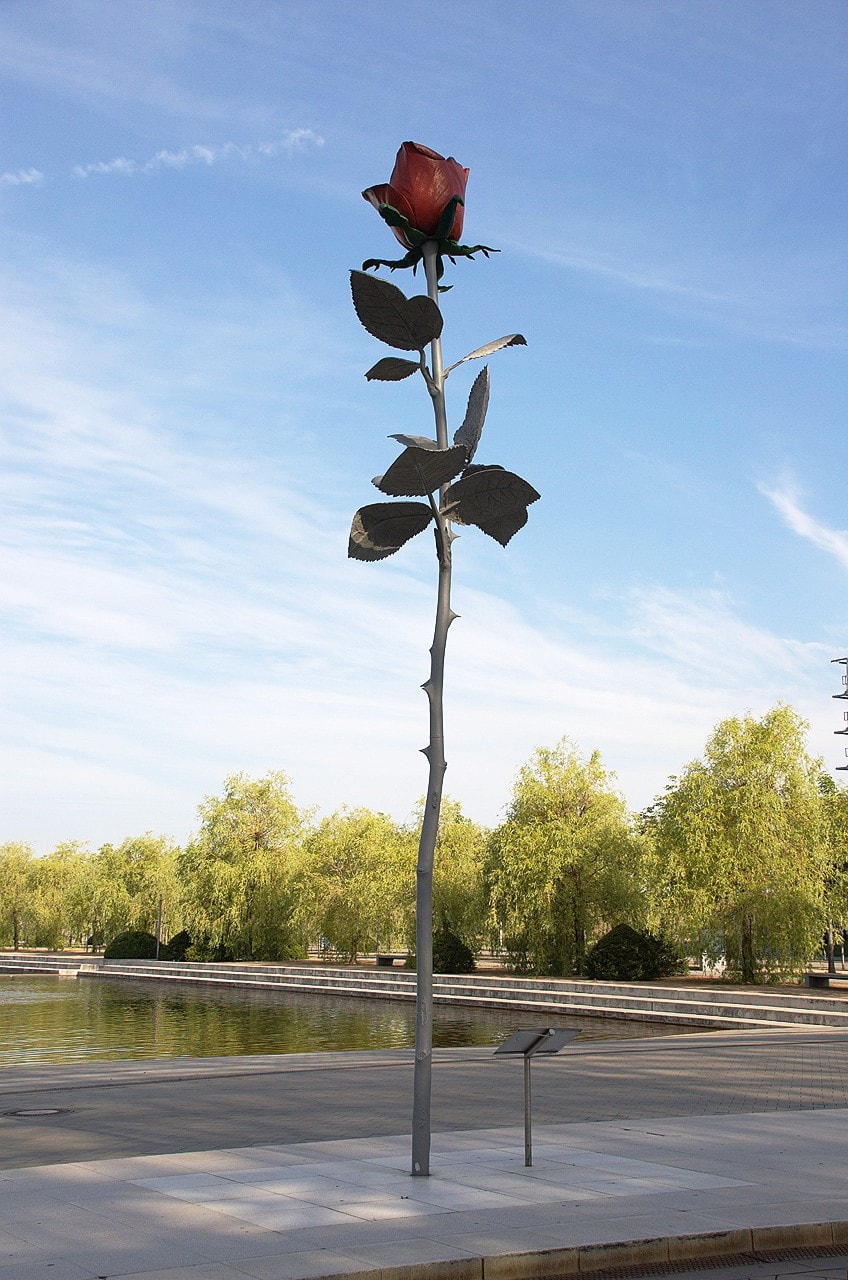
In the Contemporary art era, artists create art that responds to the unique experience of living in a technologically advancing world, where each story is unique. Artists create artworks based on their unique experiences and there are few overarching ideas and ideologies. As such, in the contemporary era, artists do not create new “-isms” as seen in Modern art movements such as Surrealism and Fauvism.
Modern artists created artworks that focused on the art-making process, which can be seen in the works of Impressionists, who created artworks in response to the invention of the camera. Impressionists, for example, were inspired by the idea of capturing light on a minute-to-minute basis. Contemporary artists do not have an overarching medium that they explore and each artist uses the medium as a way to explore larger themes and ideas. You will see that the art of Damien Hirst and Cindy Sherman differs significantly from that of Ai Weiwei and David Hockney.
Contemporary art responds to ideas of the modern world in a way that suits this moment in history and time, with each artist focusing on a life-long journey of addressing the intricacies of living in the world in their unique ways.
Famous Examples of Contemporary Artworks
We will now be looking at some of the most famous Modern and Contemporary artworks made to date, describing how these artists innovate and create such exciting artworks. These artworks are merely a glimpse at the diverse ideas that artists work with but give us a glimpse of the amazing work being produced by these famous artists. We have also included works from before 1980 that will help you understand the transition of style and approach seen in Modern and Contemporary art.
Cut Piece (1964) by Yoko Ono
| Artist | Yoko Ono (1933 – Present) |
| Date | 1964 |
| Medium | Performance art |
| Dimensions (cm) | Unavailable |
| Where It Is Housed | Performed in New York City, United States |
Cut Piece (1964) is considered a predecessor of contemporary processes in performance art, which saw the renowned contemporary artist Yoko Ono, host a happening. In this piece, she instructed her audience to participate in an act of power by producing the performance themselves. Ono relinquished control to the audience, who took turns chopping away pieces of her clothing, as she sat motionless.
Most of these “happenings” were only momentary and would exist later in photographs or as a final artwork that would carry less meaning, without the context of the performance.
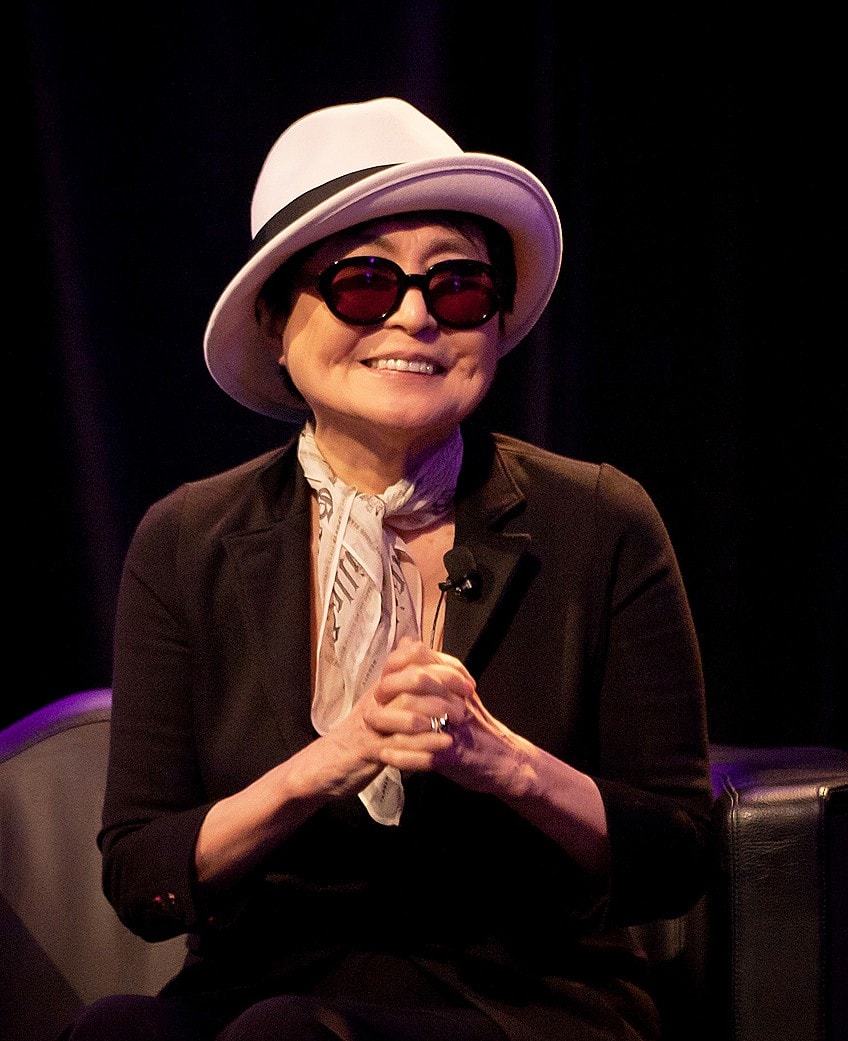
As the artist grew more and more exposed, Ono recalled that the audience became quieter and more shocked. This provocative artwork also put the artist in various levels of danger since she put her trust in the audience, that they would only cut her clothing and not use the scissors to harm her.
Infinity Mirror Room (1965) by Yayoi Kusama
| Artist Name | Yayoi Kusama (1929 – Present) |
| Date | 1965 |
| Medium | Installation |
| Dimensions (cm) | 250 × 455 × 455 |
| Where It Is Housed | Louisiana Museum of Modern Art, Humlebaek, Denmark |
Kusama’s Infinity Mirror Rooms (1965), of which there are many different variations today, are considered to be contemporary installation artworks. Using mirrors and strategic lighting, the artist transformed the intense repetition of her early paintings into a three-dimensional space and immersive perceptual experience. There are at least 20 distinct Infinity Mirror Rooms in the world. These rooms create kaleidoscopic visions with multimedia aspects, all of which create a strange illusion of the room being infinite and the audience members’ reflections, also reflecting their infinite existence.
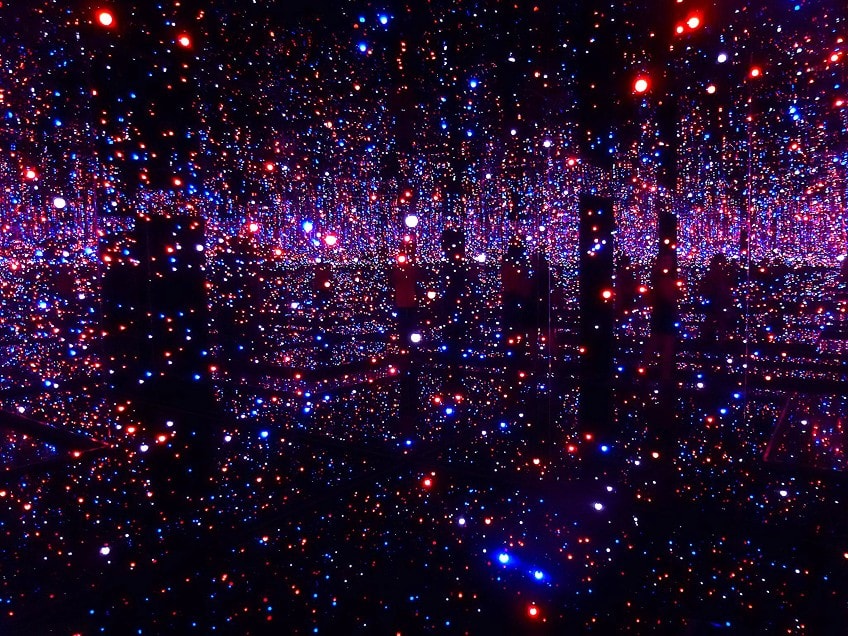
The first of these rooms, Infinity Mirror Room: Phalli’s Field, showcases a room filled with hundreds of polka-dotted phallic shapes covering every surface of the room. The labor-intensive work made the artist consider other ways of creating the effect for complete immersion. Yayoi Kusama is famously known for her iconic polka dots and circles, which brought her much comfort since her early years.
This artwork also makes the audience the subject of the work and highlights the body’s existence in an altered space that gives it more meaning.
Spiral Jetty (1970) by Robert Smithson
| Artist Name | Robert Smithson (1938 – 1973) |
| Date | 1970 |
| Medium | Land art; public sculpture |
| Dimensions (cm) | 45720 x 460 |
| Where It Is Housed | Great Salt Lake, Utah, United States |
Spiral Jetty (1970) is an example of a contemporary land artwork that was built on the Great Salt Lake in Utah. The massive land sculpture consisted of mud, salt, and basalt rocks, which were constructed into a 1,500-foot-long spiral-shaped in an anti-clockwise direction.
Spiral Jetty could be viewed from above, depending on the water level of the lake. This meant that the water level changed the meaning of the artwork since it was not visible at times.
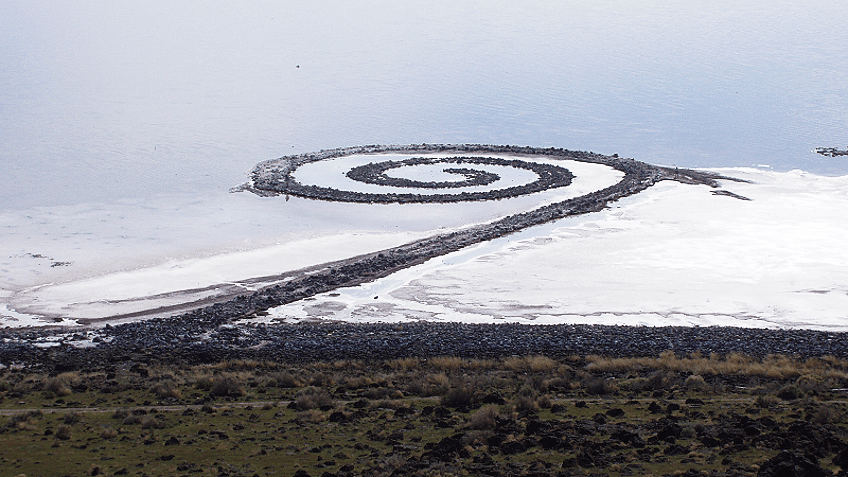
This artwork is one of the most famous land artworks. Land artists typically use the land itself as a medium, making work that is inspired by and exists on the earth without the work being detrimental to the environment. This type of art was also famous for being unable to sell and commercialize since no one could buy a piece of the lake, and this de-commercialization in the art market was also a new aspect of Contemporary art.
Rhythm 0 (1974) by Marina Abramović
| Artist Name | Marina Abramović (1946 – Present) |
| Date | 1974 |
| Medium | Performance |
| Dimensions (cm) | Unavailable |
| Where It Is Housed | Studio Morra, Naples, Italy |
In a similar artwork from the pre-contemporary era, Marina Abramović performed Rhythm 0 in 1974 at a studio in Naples, where she instructed the public to act for her with her full permission. She offered the audience 72 objects, with which they could do anything that they felt they wanted. These objects included scissors, a rose, shoes, a chair, leather strings, a scalpel, a gun, feathers, bullets, and some chocolate cake, among other domestic and dangerous objects.
The artist stood still for six hours of the performance, while audience members became more and more violent. One audience member cut open the artist’s neck, while another held a gun to her head.
The performance escalated into a fight concerning how far certain members of the public were willing to go with their violent acts. At the end of the performance, all those who had participated ran away to avoid confronting the artist and their actions. This artwork became a shocking experimentation in human nature, as well as how far art could stretch beyond the traditional notion of a painting on the wall. It questioned contemporary culture and pushed the boundaries of what we perceived as art.
The Dinner Party (1974) by Judy Chicago
| Artist Name | Judy Chicago (1939 – Present) |
| Date | 1974 |
| Medium | Installation |
| Dimensions (cm) | 1463 × 1463 |
| Where It Is Housed | Brooklyn Museum, Brooklyn, New York City, United States |
Judy Chicago’s famous contemporary artwork was a large installation artwork. The medium of installation refers to an artwork, wherein audience members can be fully immersed. This large installation included multiple tables set in a triangular shape.
“The Dinner Party” (1974) involved the set-up of an imagined banquet, where the artist invited 39 women from history to, literally and figuratively, “claim their seat at the table”.
The installation featured women from history and mythology. From Sacajawea, Susan B. Anthony, and Emily Dickinson, to the Primordial Goddess. These place settings mostly depicted stylized images of female anatomy such as vulvas. This artwork created quite a shock with the blatant display of female anatomy and the bulkiness of all the hundreds of parts that made up the work.
“The Dinner Party” (1974) gained significant recognition as one of the most important pieces of feminist art in the late-20th century and is on permanent display at the Brooklyn Museum in New York City.
Alma, Silueta en Fuego (1975) by Ana Mendieta
| Artist Name | Ana Mendieta (1948 – 1985) |
| Date | 1975 |
| Medium | Film stills |
| Dimensions (cm) | 25.4 × 20.3 |
| Where It Is Housed | Whitney Museum of American Art, New York City, United States |
Ana Mendieta was a famous land artist, who also called herself a body artist, who used photography to capture her work. In the Contemporary era, artists started using digital and photographic tools to create and display their ideas, which sparked the use of video as a common medium for many early Contemporary artists.
“Alma, Silueta en Fuego” (1975) is part of a series of body impressions, wherein the artist used her own body to create silhouettes that camouflage into the different natural landscapes.
Mendieta drew comparisons between the female figure and the landscape, and in this specific artwork, the artist pointed at the violence experienced by women on their bodies, as well as by the earth. These artworks follow a feminist theme but can also be seen as environmental artworks that focus on the earth and our treatment of natural resources. When interviewed about her own work, the artist stated, “Through my earth-body sculptures, I become one with the earth…I become an extension of nature, and nature becomes an extension of my body”.
Dropping a Han Dynasty Urn (1995) by Ai Weiwei
| Artist Name | Ai Weiwei (1957 – Present) |
| Date | 1995 |
| Medium | Performance and photograph |
| Dimensions (cm) | 148 x 121 |
| Where It Is Housed | Guggenheim Museum Bilbao, Bilbao, Spain |
In 1995, the Chinese artist and activist Ai Weiwei created this provocative example of contemporary artwork. Weiwei used what he called a “cultural ready-made”, which was a 2,000-year-old urn from the Han Dynasty. As the title suggests, the artwork itself consisted of the artist dropping and destroying an important piece of Chinese history. When asked about the artwork, the artist, known for his controversial artworks criticizing the Chinese government, quoted their leader Mao Zedong, stating that “the only way of building a new world is by destroying the old one”.
Having paid hundreds of thousands of dollars for the urn, destroying it was not only a loss for the culture but also for the artist himself. Some say this artwork was even unethical to create. There is also some debate as to whether the artist used a real piece of antiquity or a fake but his silence on the matter remains a scandalous topic.
In this artwork, one can see that the artist used the idea of the ready-made, which was inspired by Marcel Duchamp’suse of ready-made and describes objects found and used in everyday life that are repurposed for creating art. In this sense, referring to such a potent part of Chinese history as a ready-made is outrageous in itself. The destruction of the urn is only one aspect of what makes this artwork so powerful.
By dropping the urn, the artist is also letting go of his cultural values in the hope of creating a better future.
Self (2006) by Marc Quinn
| Artist Name | Marc Quinn (1964 – Present) |
| Date | 2006 |
| Medium | Blood, stainless steel, perspex, and refrigeration equipment |
| Dimensions (cm) | 208 x 63 x 63 |
| Where It Is Housed | National Portrait Gallery, London, United Kingdom |
Self is a self-portrait made by artist Marc Quinn in 1991. The artist used his own bodily materials to create this sculpture using his blood and produced a new version once every five years. The artist cast his head with ten pints of his blood collected over a few months. Quinn first produced this head sculpture during a time when he struggled with dependency, which relates to the way that the sculpture needs electricity to maintain its shape.
The materiality of the artwork is also very significant since his self-portrait uses a material that is closely connected with his life force and body.
In this way, the artist experimented with new materials in a way that made it the most meaningful. This is a great example of contemporary art that uses the medium meaningfully. This is not merely another bust of a head made with any material since the artist’s blood becomes a part of the message.
The 99 Series (2014) by Aïda Muluneh
| Artist Name | Aïda Muluneh (1974 – Present) |
| Date | 2014 |
| Medium | Photography; digital photographic print |
| Dimensions (cm) | 80 x 80 |
| Where It Is Housed | David Krut Workshop, Johannesburg, South Africa |
Aïda Muluneh is a Contemporary artist who also uses photography to create stunning postcolonial self-portraits. Her portraits in The 99 Series (2014) consider postcolonial Africa and integrate the faces of women from her hometown in Addis Ababa, in a way that challenges traditional portraiture. The 99 Series includes women dressed in theatrical garments with their faces painted in bright colors and patterns.
The artist uses these portraits and her photography to address women’s gender roles and identity in Ethiopia. The photos in the series are calm and evoke the symbolism behind white and red profoundly.
The “white face” is referred to as a mask by the artist, which encapsulates the way that representation is altered for political advantages. Most of the hands in these photos are red, referring to them being bloodstained. These hands try to control the portrait, covering the women’s faces, and refer to the dark history of colonialism and the way it has impacted African nations.
Ultimately this series analyzes what it is like for Muluneh to be an African woman, who is always considered to be an outsider everywhere she travels.
In this way, her own story becomes universally applicable to many women all over the world and gives us insight into the experiences of those who are often treated like the “other”. This story is described by the artist as, “a story we each carry, of loss, of oppressors, of victims, of disconnection, of belonging, of longing you see paradise in the dark abyss of eternity”.
Love Is in the Bin (2018) by Banksy
| Artist Name | Banksy (1974 – Present) |
| Date | 2018 |
| Medium | Aerosol paint, acrylic paint, canvas, and cardboard |
| Dimensions (cm) | 101 × 78 × 18 |
| Where It Is Housed | Private collection |
Renowned Contemporary graffiti artist Banksy is best known for his street art, which made global news in 2018 when he auctioned off an artwork at Sotheby’s in London. As soon as the artwork was sold and the auctioneer slammed his gavel, the artwork started beeping and the artwork was shredded by its frame.
The artist had secretly installed a shredder inside the frame. As soon as it was sold, a portion of his most famous artwork was instantly destroyed.
In an Instagram post, the artist later said, “The urge to destroy is also a creative urge”. Banksy is famous for his powerful and simplistic graffiti artworks and the prank-like shredded artwork shows that humor is also an important part of Contemporary art. The newly shredded work took on its current new title and was sold for $25.3 million on the same day. While we have not covered all the most famous Contemporary artists, who have made a profound impact on current art styles, there are plenty of other artists worth exploring. These include leading figures like Njideka Akunyili Crosby, Cecily Brown, Jenny Saville, Kara Walker, Anish Kapoor, Willem de Kooning, and Anselm Kiefer, whose works capture the essence of the Modern and Contemporary eras.
We hope that you have enjoyed learning about the different characteristics of Contemporary art and have found these famous examples inspiring. The examples of Contemporary art here show how diverse art-making can be and give us a glimpse of the stories and concepts that drive contemporary practices. From performance to installation and photography, artists continue to create impressive artworks that effectively convey important messages about the present.
Take a look at our contemporary art webstory!
Frequently Asked Questions
What Is the Definition of Contemporary Art?
Art that was produced since the 1980s and late 20th century until the present day is considered to be Contemporary art. Such art is informed by the context of experiences in a technologically advanced world and encompasses relevant themes that speak to today’s socio-political climate.
Is Contemporary Art the Same As Modern Art?
Contemporary art and modern art are not considered to be the same. Modern art describes the period in art-making before Contemporary art emerged, which is all art produced in the context of the first half of the 20th century, until the 1980s.
What Are Some Characteristics of Contemporary Art?
Contemporary art is diverse in styles and techniques. The most important characteristic of Contemporary art is that each artist makes work in a way that sheds light on their unique experience and interpretation of the present world. Contemporary art can also encompass new media artworks that transform our experience of art while discussing themes and concepts related to present-day issues and events.
Isabella studied at the University of Cape Town in South Africa and graduated with a Bachelor of Arts majoring in English Literature & Language and Psychology. Throughout her undergraduate years, she took Art History as an additional subject and absolutely loved it. Building on from her art history knowledge that began in high school, art has always been a particular area of fascination for her. From learning about artworks previously unknown to her, or sharpening her existing understanding of specific works, the ability to continue learning within this interesting sphere excites her greatly.
Her focal points of interest in art history encompass profiling specific artists and art movements, as it is these areas where she is able to really dig deep into the rich narrative of the art world. Additionally, she particularly enjoys exploring the different artistic styles of the 20th century, as well as the important impact that female artists have had on the development of art history.
Learn more about Isabella Meyer and the Art in Context Team.
Cite this Article
Isabella, Meyer, “What Is Contemporary Art? – The Art Styles of Today.” Art in Context. May 11, 2022. URL: https://artincontext.org/what-is-contemporary-art/
Meyer, I. (2022, 11 May). What Is Contemporary Art? – The Art Styles of Today. Art in Context. https://artincontext.org/what-is-contemporary-art/
Meyer, Isabella. “What Is Contemporary Art? – The Art Styles of Today.” Art in Context, May 11, 2022. https://artincontext.org/what-is-contemporary-art/.




